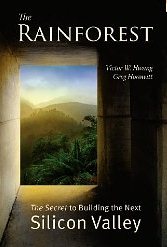BLM firefighters Ben Oakleaf and Chris Swisher have much in common.
They're both BLM smokejumpers. They both worked on the Midnight Suns Interagency Hotshot Crew in Alaska. They're both highly respected in smokejumping circles. They're both described by their supervisors as having a great work ethic and outstanding attitudes. They've been good friends for about a dozen years, when they met while working as hotshots.
And they were both surprised when they were named winners of the "Al Dunton Award," which honors the late BLM pioneer in fire and aviation management…
|
"It was a surprise," says Swisher, who jumps out of Fort Wainwright, Alaska. "I didn't know anything about it until I was told that I won."
"I didn't even know I was nominated until the jumper manager called me into his office and told me. I was very surprised," says Oakleaf, who is part of the Great Basin smokejumpers, based in Boise, Idaho.
Part of the reason Swisher and Oakleaf were nominated is due to their work in combining the first-year smokejumper training. For a dozen years, the Alaska and Great Basin rookie jumpers trained separately. That didn't seem the best way to teach the ropes to the new jumpers, Swisher and Oakleaf thought.
"Combined rookie training was done in the past. There's been talk about it through the years, about doing the training that way again," Oakleaf says. "We both have great respect for the two BLM smokejumper bases. We thought combining the training would be a good thing to do."
Smokejumper management agreed and Swisher and Oakleaf were given the challenging assignment to make it happen.
The combined rookie training took place in April of 2012 in Alaska. By all accounts, it was a huge success. Combined training is again scheduled for April of this year, in Idaho.
"They were analytical, deliberate, mutually respectful of one another's opinions, and ultimately convincing that the timing was right to give this combined effort another shot," says Hector Madrid, manager of the Great Basin smokejumpers. "They developed guidelines, the training syllabus, a logistics plan and selected a cadre that shared the same viewpoints about rookie training."
The effort proved worthwhile, according to Bill Cramer, Alaska smokejumper manager.
"The end result was that we had a strong group of first-year jumpers who came ready to contribute. The training could not have been done any better," he says.
Great Basin jumpers often help Alaska jumpers in the spring, the peak of the northern fire season. In turn, Alaska jumpers often "boost" firefighting efforts in the Lower 48 during July and August, when the fire season is busiest in the West.
Having the same training and familiarity with one another is a big advantage.
"The more we know each other and about each other, the more seamless it is when we integrate the crews," says Oakleaf.
But it was more than the combined rookie training that distinguishes Swisher and Oakleaf. Their supervisors say the two excel in every aspect of the smokejumping program.
"He seeks challenges, he accepts responsibility, he always looks for ways to improve," says Cramer of his colleague Swisher. "That's what resonates with me. It's not just what he did in 2012, but the way he continually performs his job.
"He's humble, without reason to be," Cramer adds. "From his perspective, he just shows up and tries to do his job the best way he can. He doesn't think he's anyone special."
Madrid is equal in his praise of Oakleaf.
"Ben's strength is that he leads by example. No matter his experience, he's never been above or beyond doing a task. He has great firefighting and jumping skills. He's the full package," says Madrid. "His attitude is second to none. He's never in a bad mood, never had a bad moment, no matter the situation."
The "Al Dunton Award" was established last year. Dunton was a rookie smokejumper in Fairbanks in 1967. He managed the smokejumper base there from 1972 through 1984 and remained active in fire management throughout his career. Much of BLM's success in fire management can be traced back to Dunton's work and innovations. The award was established by the interagency smokejumper base managers and the National Smokejumper Association, with the support of Al Dunton's wife, Mary, and other family members.
Last year's BLM winner was Gary Baumgartner.
The respect level is high between the award recipients.
"On a personal note, (organizing) the combined rookie training was fun to do with Chris. We've been good friends now for a long time," Oakleaf says.
"I think there are more worthy people than me," says Swisher, "but I'm glad that Ben was chosen."
Says Cramer of the two, "I wish we could put them in a copy machine and duplicate them. Of course, if we did, the rest of us might be out of a job."
*********************
Reprint from "The BLM Daily," February 4, 2013.










